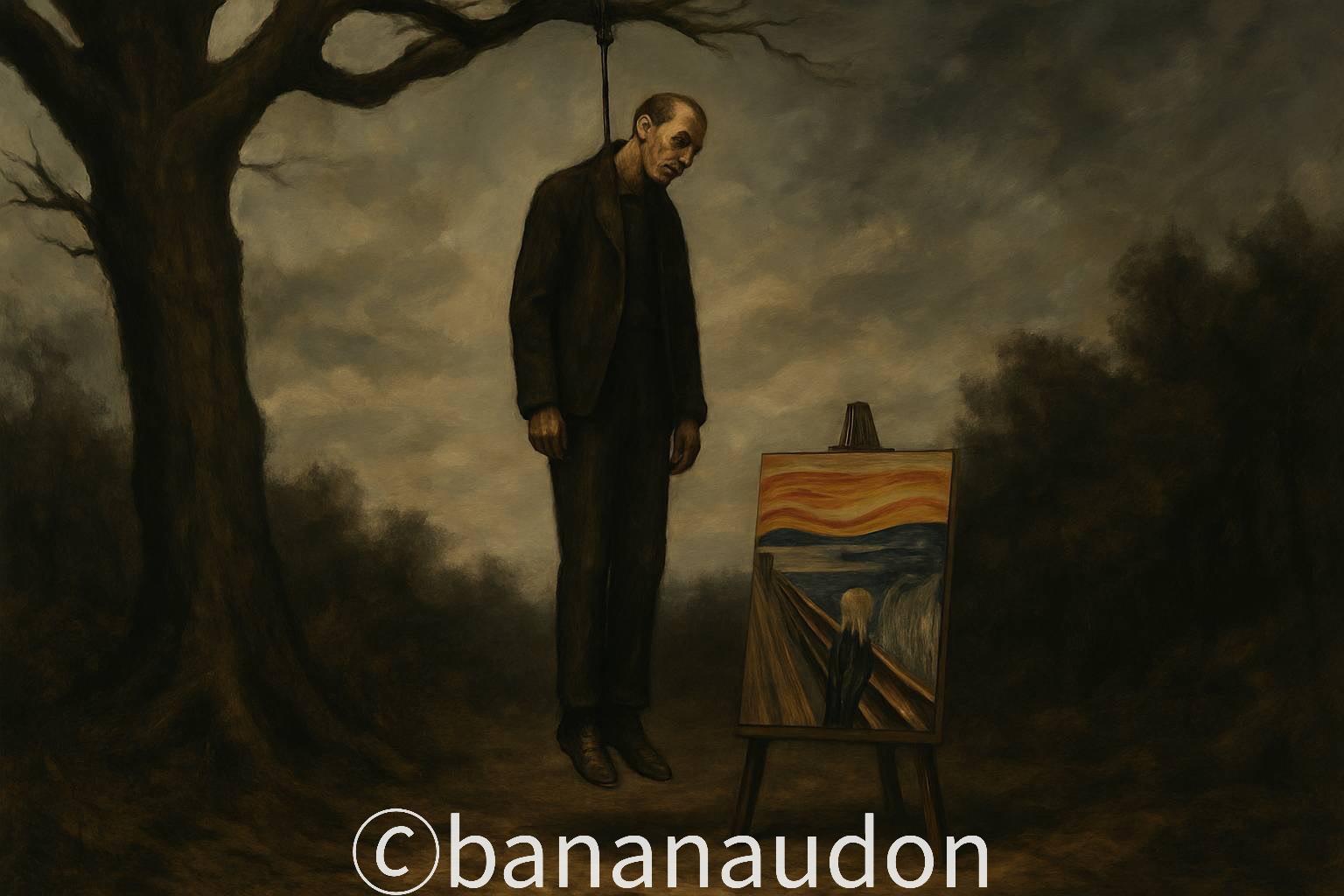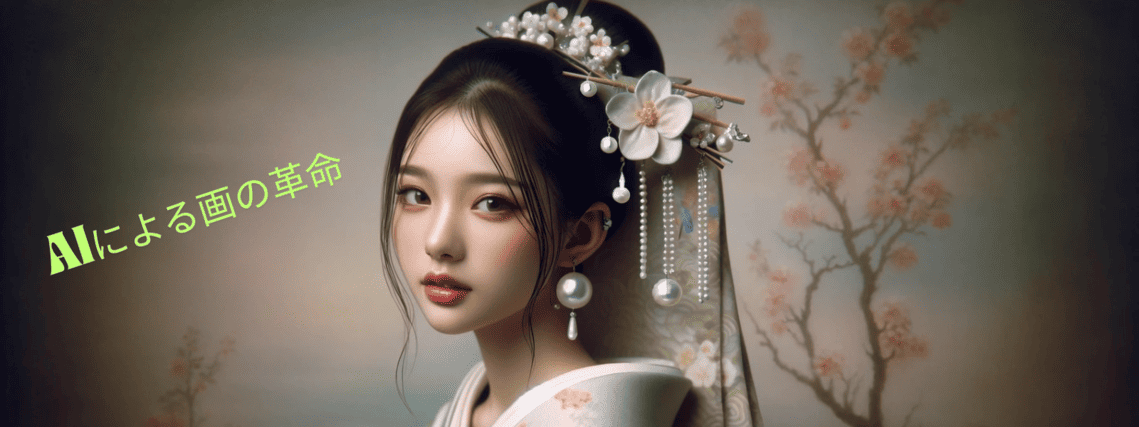The End of a Scream: A Reinterpretation of Edvard Munch’s Iconic Painting
2025.04.29投稿
広告

Reinterpretations of classic art often illuminate truths that even the original may have obscured. In this haunting image, we see a man—possibly Munch himself—hanging before his most famous work, asking us to consider the cost of creating beauty out of agony.
First Impressions and Overall Atmosphere
This reinterpretation hits like a punch to the gut. Under a brooding, overcast sky, a man hangs lifeless from a barren tree. In front of him stands an easel displaying Edvard Munch’s The Scream. Amid the dreary, monochromatic background, it’s the only object bursting with color—suggesting that art alone remains alive, while the artist and the world around him have succumbed to death or despair.
Original Masterpiece: Context and Significance
Basic Information
- Title: The Scream
- Artist: Edvard Munch
- Year: 1893
- Collection: National Gallery of Norway, among others
Historical Background
The Scream is Munch’s most haunting expression of existential dread. It belongs to his series The Frieze of Life, which explores love, anxiety, and death. Munch himself described the inspiration behind the painting as a moment of overwhelming anxiety during a walk, when he felt “a scream pass through nature.” The work is a window into the fragility of the human psyche.
Key Characteristics
- Swirling brushwork in the sky to represent emotional turbulence
- A central figure frozen mid-scream, facial features distorted with terror
- Strong use of perspective with a bridge receding into the background
- Discordant color palette blending fiery reds, deep blues, and murky yellows
Points of Reinterpretation
This reimagined piece dares to depict what The Scream only suggests: total collapse. The man hanging from the tree is possibly Munch himself—offering a grim yet poetic conclusion to a life overwhelmed by inner torment.
1. Color and Contrast
- The background and the hanging man are rendered in cold, muted tones—browns, blacks, and grays—symbolizing the absence of life.
- In stark contrast, the painting on the easel retains the vibrant, chaotic palette of the original Scream, highlighting that while the artist has died, the art lives on.
2. Suicide vs. Creation
- The man’s death appears not as a mere tragedy, but as the inevitable endpoint of creative exhaustion—he has screamed his soul into the canvas, and nothing remains.
- The scene suggests that for some, the act of creation is not life-giving but life-consuming.
3. Framing and Perspective
- The easel is slightly turned toward the viewer, inviting them to confront the scream directly.
- This creates a metatextual challenge to the audience: Do you understand this scream? Or are you merely witnessing its aftermath?
Interpretation: Art as Death, or Death Preserved Through Art
The core question posed by this reinterpretation is: What remains after the scream?
While Munch’s original hints at anxiety, this new vision gives it a climax—a brutal visual answer. The artist is no longer just a vessel for emotion; he is the casualty of it. By suggesting that Munch himself is the figure hanging from the tree, the artist reinterprets The Scream not merely as a painting of fear, but as a self-portrait of artistic self-destruction.
Here, The Scream is both epitaph and legacy.
Critical Summary
This reinterpretation transcends homage. It’s a visceral meta-commentary on the limits of human expression and the cost of baring one’s soul through art. The artist behind this version doesn’t replicate Munch’s style—they extend his anguish to its logical, painful conclusion.
The painting asks: When the scream is over, what’s left?
Only silence—and the art that outlives it.
